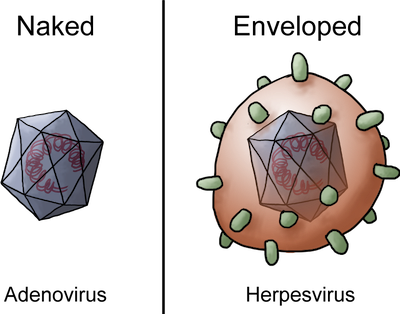Virus Classification
The United Colors of Virus-ton
We all get sick, and when we do, it's usually due to one of two reasons: we were infected by a bacterium or virus, or because we fell in love with someone out of our league. This chapter is mostly going to talk about the former. If you want to know about love, you should listen to more Beatles songs.People have known about bacteria for centuries, because they are visible by most microscopes. However, viruses are a fairly recent discovery. Viruses are hard to study for 3 reasons:
- Viruses are very small and can only be seen on special microscopes—while they never get on rollercoasters, they're always comfortable on airplane seats.
- Viruses cannot grow or replicate without taking over another cell—they make the worst roommates.
- Viruses are very diverse—they come in more flavors than a fancy Coke Freestyle can pump out.
- a nucleic acid genome made of either DNA or RNA
- a protective coat called a protein capsid
The cartoon below shows the two types of viruses: those with envelopes, and those without, called naked viruses. Wait. You are 18, right? Otherwise, just skip ahead to the non-naked viruses section until you're ready.
Actually, you know what? We'll let you have a peek at naked viruses anyway…just don't rat us out. We don't like rats.

Prototypical Virus Structure
So we have naked and enveloped viruses. But there's more than one way to skin a cat. We can categorize them all sorts of ways, such as based upon type of genome (RNA vs. DNA, segmented vs. non-segmented), how the virus spreads (oral-fecal, bloodborne, saliva), type of capsid (helical vs. icosahedron), host type (animal vs. bacterial/archaea), and on and on.
We'll go through all of these things, so don't worry about all the terms now; just know that viruses are very diverse. Finally, this chapter is mostly going to talk about animal viruses, specifically those viruses that infect humans. Which is fortunate, as the non-human infecting viruses are all freakish looking (such as the bacteriophages described in the Capsid Structure section).